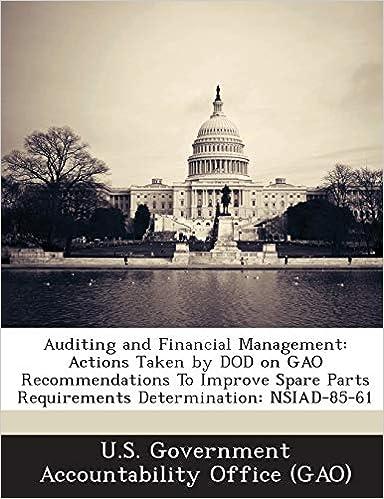Darwin Company manufactures only one product that it sells for $200 per unit. The company uses plantwide overhead cost allocation based on the number of
Darwin Company manufactures only one product that it sells for $200 per unit. The company uses plantwide overhead cost allocation based on the number of units produced. It provided the following estimates at the beginning of the year:
| Number of units produced | 50,000 | |
| Total fixed manufacturing overhead costs | $ | 1,000,000 |
| Variable manufacturing overhead per unit produced | $ | 12 |
During the year, the company had no beginning inventories of any kind and no ending raw materials or work in process inventories. All raw materials were used in production as direct materials. An unexpected business downturn caused annual sales to drop to 38,000 units. In response to the decline in sales, Darwin decreased its annual production to 40,000 units. The companys actual costs for the year were as follows:
| Variable costs per unit: | ||
| Manufacturing: | ||
| Direct materials | $ | 78 |
| Direct labor | $ | 60 |
| Variable manufacturing overhead | $ | 12 |
| Variable selling and administrative | $ | 15 |
| Fixed costs per year: | ||
| Fixed manufacturing overhead | $ | 1,000,000 |
| Fixed selling and administrative expenses | $ | 350,000 |
Required:
1. Assuming the company uses normal costing (as described in Chapters 2 and 3): a. Compute the plantwide predetermined overhead rate. b. Compute the unit product cost for each unit produced during the year. c. Prepare a schedule of cost of goods manufactured and a schedule of cost of goods sold. Assume that any underapplied or overapplied overhead is closed entirely to cost of goods sold. d. Compute absorption costing net operating income for the year.
2. Assuming the company uses actual costing (as described in Chapter 6): a. Compute the unit product cost for each unit produced during the year. b. Compute absorption costing net operating income for the year.



Step by Step Solution
There are 3 Steps involved in it
Step: 1

See step-by-step solutions with expert insights and AI powered tools for academic success
Step: 2

Step: 3

Ace Your Homework with AI
Get the answers you need in no time with our AI-driven, step-by-step assistance
Get Started


